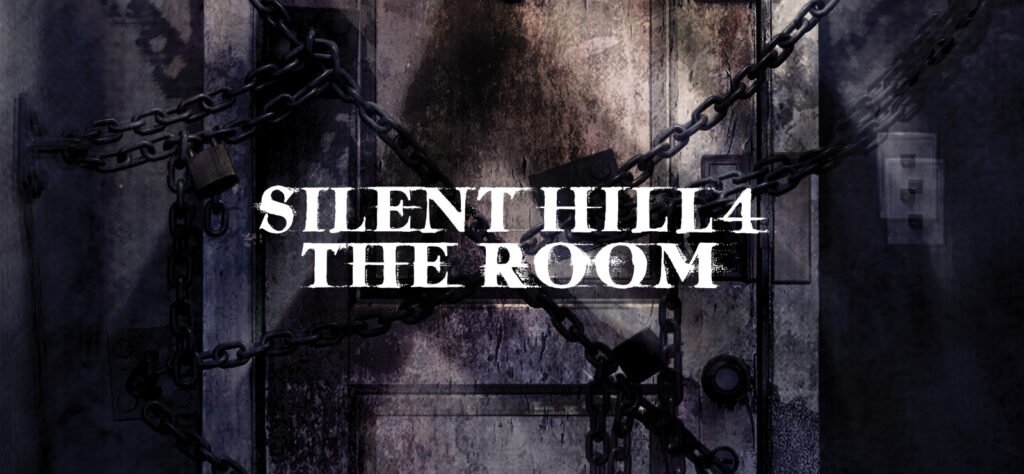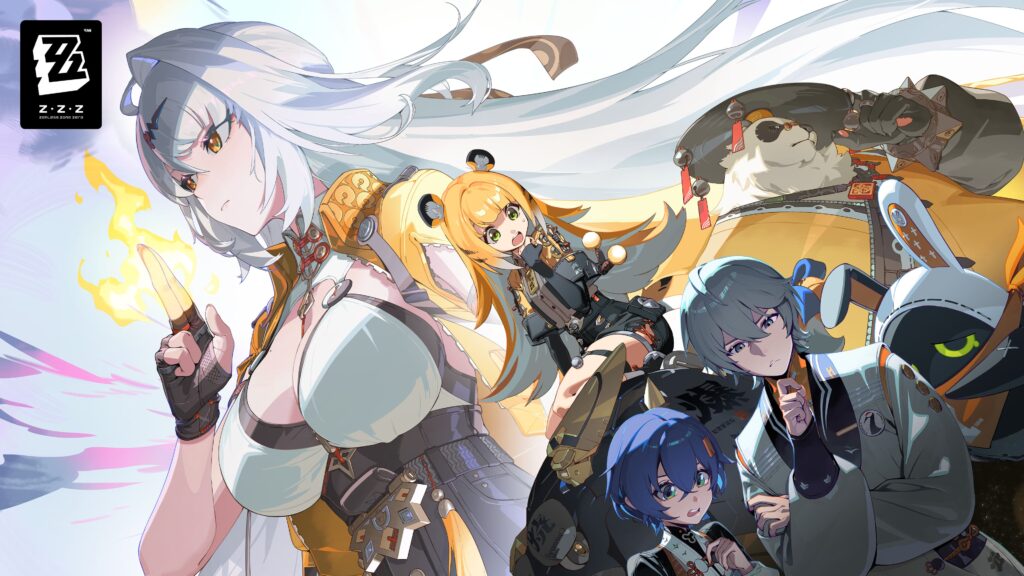Wwhat better way to embrace the spooky atmosphere than with a retro review of the renowned survival horror game, Silent Hill 4: The Room? In 2004, the masterminds at Team Silent, a division of Konami Computer Entertainment Tokyo, brought us the fourth installment in the Silent Hill series, published by Konami.
Though the franchise has lain dormant for a while, its name still echoes through the corridors of gaming history.
Despite a few missteps, Silent Hill has made an indelible mark on the survival horror genre, particularly with Silent Hill 1 and 2. However, Silent Hill 4, we must admit, falls somewhat short of the high bar set by its predecessors and that’s a big fact.
If you’re ready to confront your fears and dive into the twisted world of this retro horror gem, you’ve arrived at the perfect destination. Join us as we navigate the disturbing realm of Silent Hill 4 – The Room.

Introduction
With a subtle departure from its predecessors, Silent Hill 4 beckons players into the nightmarish realm of survival horror. Unlike the familiar town of Silent Hill from previous installments, this game unfolds in the neighboring city of South Ashfield, with its focal point being an apartment building plagued by malevolence, and the man trapped within – Henry Townshend.
As Henry, players will navigate the eerie locales of Ashfield, including subways, water towers, forests, and the ominous apartment itself. The objective is not merely the pursuit of a lost love or evasion of a recurring antagonist; instead, you’re thrust into a murder mystery while struggling to break free from your own entrapment.
The apartment serves as the central hub for the game, acting as the sole sanctuary for saving your progress and item storage. This departure from the previous games’ more intricate item management system aims to streamline the process, allowing for more straightforward item selection.
Silent Hill 4 offers a mixed bag of experiences, excelling in some aspects while faltering in the major aspects, ultimately leaving players with a sense of mild satisfaction. In the upcoming journey, we’ll delve into the game’s rich history and explore what makes Silent Hill 4 – The room.
Would this game stand up to the others in the series?

Story
Within the ominous walls of Silent Hill 4, a new type of horror emerges – intense and palpable, neither purely psychological nor overt.
Mysteries of the ROOM..
The Room commences with an unsettling backstory, as we discover that the protagonist has dwelled in Room 302 for 2 long years.
The opening scene plunges us into a hair-raising exploration of the eerie apartment, where a zombie-like specter gradually oozes from the walls. While this is a chilling beginning, it merely sets the stage for the immersive and intense narrative that Konami has crafted.
In this spine-tingling world, nestled within the enigmatic city of South Ashfield, we encounter our main character, Henry Townshend. His tale of terror begins five days ago when mysterious chains materialize on his front door, effectively sealing Room 302. On the door’s interior, a cryptic message scrawled in red reads, “Don’t go out!! Walter.”

Over these harrowing five days, Henry grapples with recurring nightmares, debilitating headaches, and a complete absence of contact with the outside world. His phone’s battery depletes, all exits and windows are sealed, and his anguished cries remain unheard by his neighbors.
From the confines of his room, Henry can only peer through the peephole in his front door, catch glimpses of the outside world through his windows, listen to sporadic radio transmissions, and receive cryptic memos and messages slipped under his door.
On the fateful fifth day, as despair and confusion reach their zenith, a peculiar, otherworldly hole appears within his bathroom wall. This newfound anomaly appears to be Henry’s sole escape route. Summoning the last shreds of courage, Henry ventures through the hole, spiraling into an alternate reality that serves as a gateway to nightmarish alternate dimensions, often referred to as Walter’s other worlds.
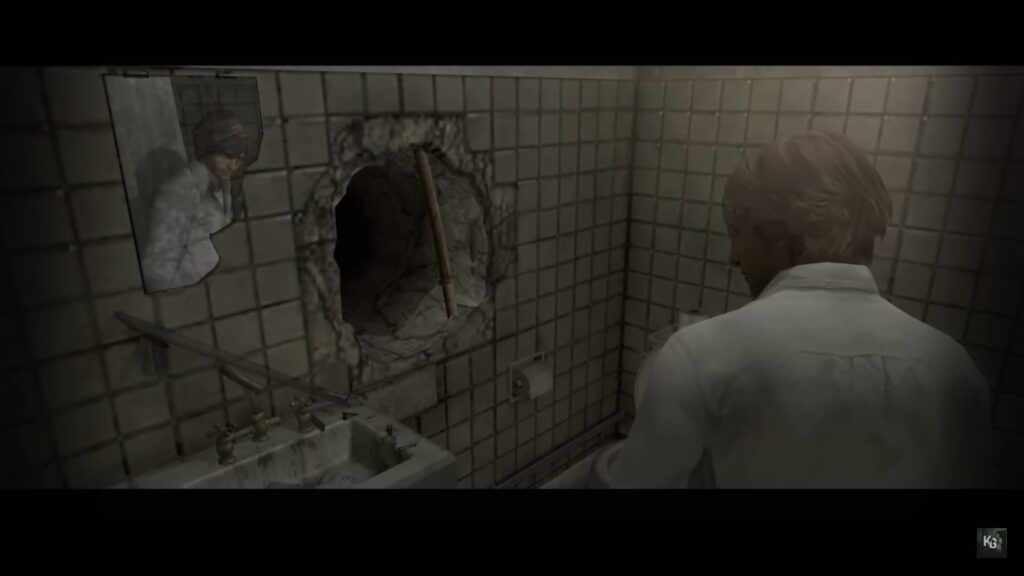
It is through this enigmatic portal that the narrative of this mind-bending game takes shape. As Henry emerges from the eerie Room 302, he finds himself within a surreal subway station, where he encounters Cynthia Velasquez. Convinced that it’s all a dream, Cynthia implores Henry to help her find the exit and promises him a peculiar favor in return.
Tragedy soon strikes as Cynthia falls ill and seeks refuge in the restroom, leaving Henry to confront the game’s initial attacks – the blood-sucking Sniffers, canine adversaries.
Henry’s discovery that Cynthia has met an untimely demise mirrors similar gruesome fates awaiting other characters he encounters in these nightmarish alternate realms – Jasper, an inquisitive investigator of the sinister cult; Andrew De Silva, a former employee of the enigmatic Wish House orphanage; and Richard Braintree, another resident of Henry’s apartment complex. These deaths are not random but bear the unsettling signature of the serial killer, Walter Sullivan, a malevolent presence lurking in the shadows of this twisted tale.
Walter Sullivan
Born in 1967 and was abandoned at Birth by both his mother and father, Sulivan never had it easy. He was born in apartment room 302 which is the same room where Henry resides in the present. However due to the absence of his parents, Walter used to consider the room his own mother.
The alternate dimension that ensnares Henry is, in essence, a nightmarish realm born of Walter’s imagination. It serves as a canvas for his childhood fears and his grim perspective on society. Throughout the game, multiple versions of Walter emerge, each offering a glimpse into his fractured psyche. There’s the manifestation of him as a young boy, an innocent victim of a tormented upbringing, and another as an adult, wandering the sinister landscapes of the other world.

Walter’s formative years were shaped by the teachings of the cult known as “The Order,” which had a profound and lasting influence on him. He clung fervently to the cult’s beliefs, mirroring the cult’s leader, Claudia Wolf, in his conviction that humanity and society were inherently corrupt, evil, and mired in suffering.
The grotesque manifestations that haunt the parallel dimensions within the game mirror Walter’s intense fear, hatred, and animosity toward humanity and the world. Tragically, Walter’s traumatic experiences, particularly with his mother, fueled deep-seated animosity towards women in general, materializing in the form of monstrous entities known as the Patients, lurking within the hospital level of the game.
A driving force that fueled Walter’s dark journey was an intense longing to reunite with the mother he never knew. This yearning ran so deep that he was willing to commit gruesome murders, numbering 21 individuals, believing that these sacrifices were essential to bring about the “Rebirth” of the cult’s deity and the inception of an afterlife where he might finally find his mother.
In his twisted perspective, these killings represented a purification of humanity’s immorality and corruption, paving the way for the birth of a new world, driven by an unsettling and fanatical devotion.

Eileen Galvin
Another intriguing character in the game is Eileen Galvin, who resides next door to Henry in room 303. During the initial half of the game, direct interaction with her is impossible, and the only way to observe her is through peepholes in the walls.
Eileen Galvin becomes a pivotal figure in the twisted tale of Walter Sullivan. She was Walter’s twentieth intended victim, but her fate takes a different turn. The child manifestation of Walter intervenes, saving her from certain doom.
After navigating the first five of Walter’s otherworldly dimensions, Henry awakens to the sound of an approaching ambulance en route to St. Jerome’s Hospital. To his surprise, he discovers Eileen Galvin alive within one of the hospital’s rooms. Together, they resolve to find a means of escaping Walter’s nightmarish realm for good.

Their journey, however, takes a complicated turn. Henry realizes that he is the sole individual capable of perceiving and utilizing the enigmatic holes connecting different dimensions, while Eileen remains unable to see them.
Eileen shares critical information about Joseph Schreiber, a journalist who mysteriously vanished a few months before Henry occupied room 302. Joseph underwent a similar ordeal to Henry’s, venturing into the otherworlds but with drastically different outcomes. Tragically, he never escaped the room and became Walter’s fifteenth victim.
Henry and Eileen soon encounter a dark abyss housing a past version of room 302 and a fragment of Joseph Schreiber’s memories. Inside, they come face to face with a statue-like representation of Joseph, who imparts crucial information about Walter’s history. Joseph reveals that these nightmarish otherworlds have sprung from Walter’s twisted holy assumption ritual.
Furthermore, Joseph warns them that they are the final pieces in Walter’s sinister plan, with Eileen serving as the mother reborn and Henry as the receiver of wisdom. To prevent the completion of the 21 sacraments, they must eliminate Walter. Failure to do so would mean their own deaths or the loss of their souls.
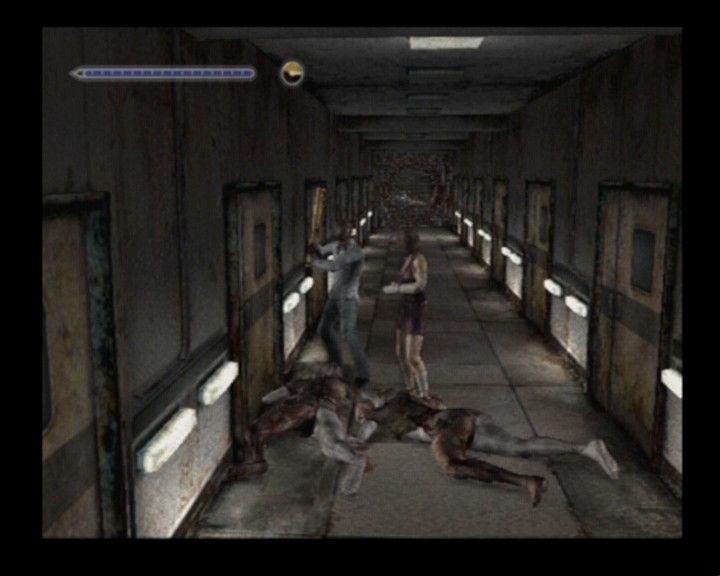
Henry’s quest leads him to Frank Sunderland’s apartment room, where he discovers Walter’s preserved umbilical cord, a crucial weapon in their battle. Notably, Frank Sunderland is a character with a connection to the Silent Hill series, being the father of the protagonist, James, in Silent Hill 2. He lived in the same apartment complex where the events of Silent Hill 4 unfold.
However, the story takes a dark twist as Eileen leaves Henry and returns to his apartment, possessed and on the verge of walking into a deadly trap. This sets the stage for a climactic showdown between Henry and Walter.
The Ending
What unfolds after the harrowing cycle of nightmarish journeys and the relentless pursuit between Walter and Henry?
Silent Hill 4 offers players a choice of four distinct endings, each more compelling than the last.
First Ending: “ESCAPE”
In the “Escape” ending, Walter falls to the floor, his final cries for his mother fading into motionlessness. The room trembles, and Eileen, now free from possession, collapses. As young Walter in his own apartment world knocks on the room door, he begins to fade away. Henry reaches out to Eileen, and the door to his apartment finally swings open.
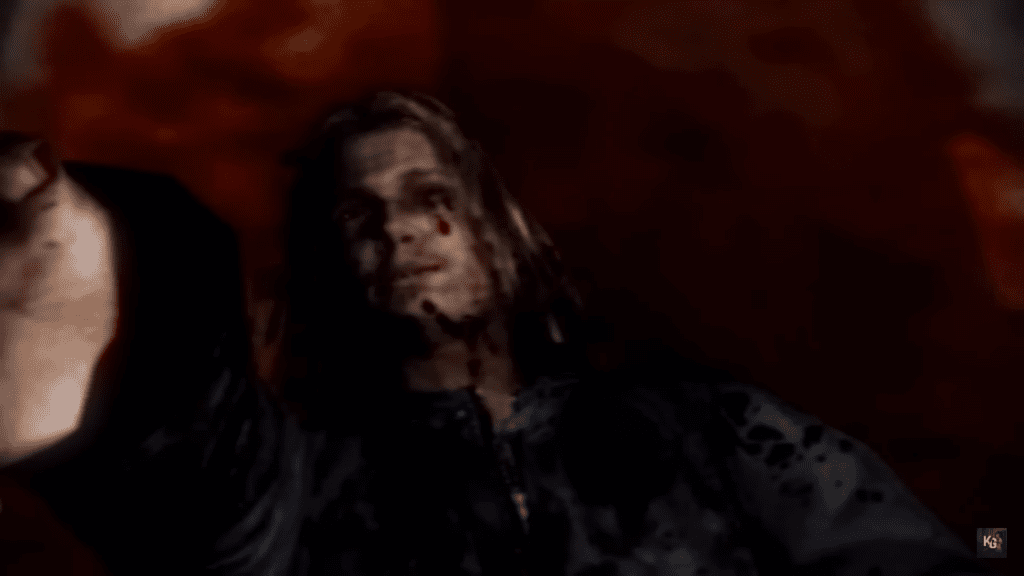
Henry departs the apartment building for good, and one day later, he visits Eileen in a standard hospital, bearing flowers that symbolize their stronger connection. This is considered the best ending, but achieving it requires saving Eileen and purging at least 80% of the hauntings from Henry’s apartment, a challenging feat.
Second Ending: “MOTHER”
The “Mother” ending closely mirrors the “Escape” ending, but with a twist. When Henry visits Eileen in the hospital, she expresses her intention to return to the apartment complex. The scene transitions to Henry’s haunted apartment, suggesting potential possession and the nightmarish cycle beginning anew. To attain this ending, you need to save Eileen without clearing 80% or more of the apartment’s hauntings.
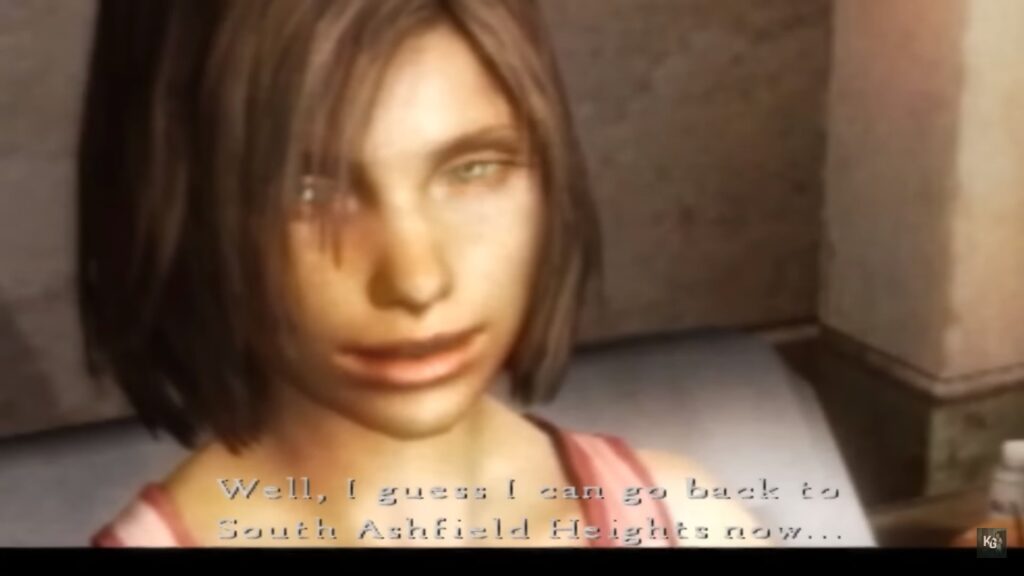
Third Ending: “EILEEN’S DEATH”
The “Eileen’s Death” ending is a heart-wrenching and sorrowful conclusion. In this scenario, Henry learns from the radio that Eileen succumbed to her injuries, filling him with despair and regret for not being able to save her. To reach this ending, you must allow Eileen to die while simultaneously clearing most of the hauntings from Henry’s apartment.
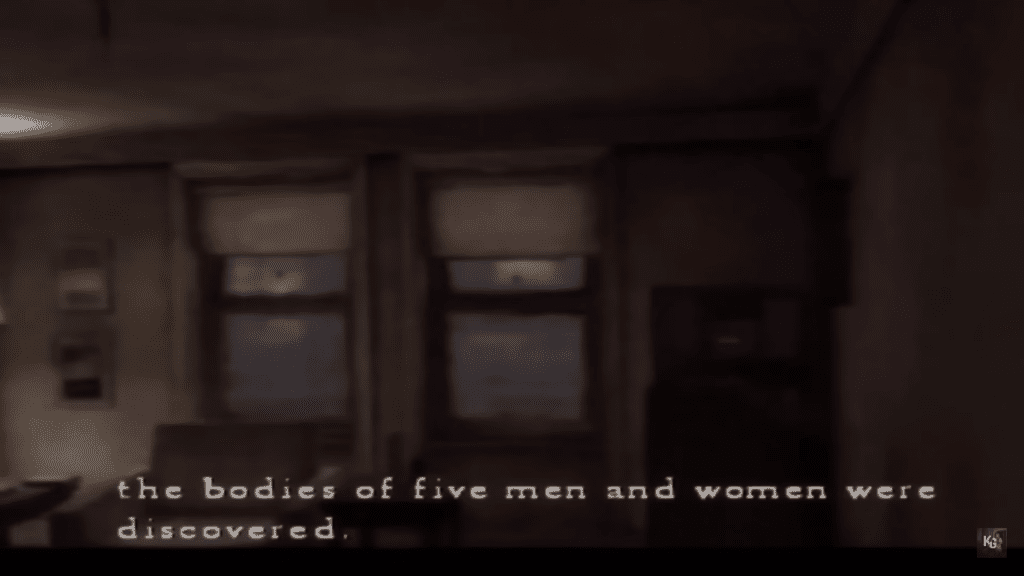
Fourth Ending: “21 SACRAMENTS”
The “21 Sacraments” ending, undoubtedly the most poignant and heartbreaking, sees Walter’s defeat, but Henry becomes seemingly possessed. Young Walter appears in the bloodstained Room 302, expressing his intent to stay with Henry forever. Tragically, the radio announces the deaths of Eileen, Henry, and others, signifying the completion of the 21 sacraments ritual with all 21 individuals having died.
This ending can only be reached by allowing Eileen to die and failing to clear 80% of the apartment’s hauntings. Developers intentionally designed the game to make this ending more accessible, delivering the most tragic conclusion that leaves a lasting impact on players’ emotions.
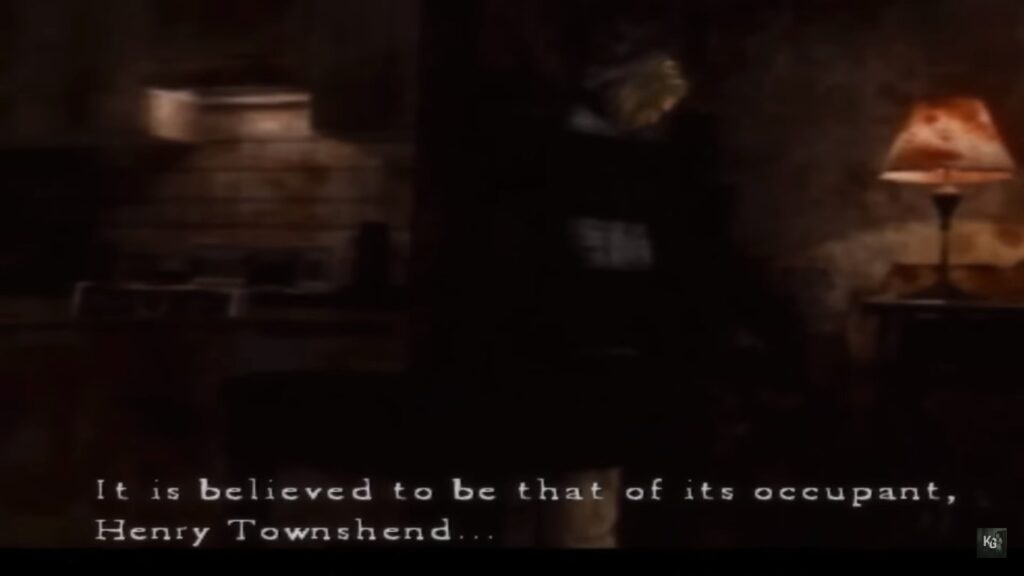
The Room is a mixed bag. On the positive side, it offers a compelling narrative that delves into the mind of the protagonist, Henry, as he grapples with the horrors of his confinement and the enigmatic presence of Walter Sullivan. The game’s intense and palpable horror, along with its intricate storytelling, creates a chilling and immersive experience that is sure to captivate fans of the series.
However, on the downside, while the story is engaging, it does have moments that may leave players wanting more, with some aspects feeling less innovative compared to its predecessors. Additionally, the narrative’s complexity can be overwhelming for newcomers to the Silent Hill universe.
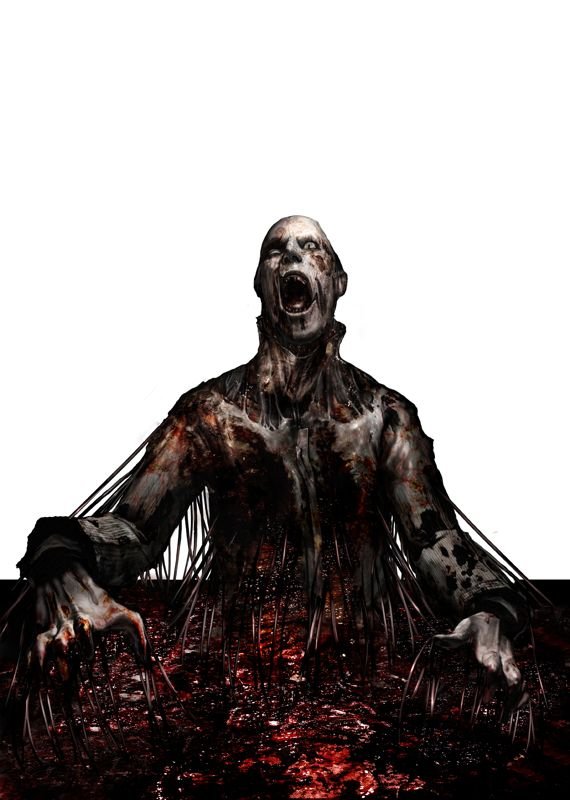
Gameplay
Silent Hill 4’s development ran alongside that of Silent Hill 3, and the team aimed for a different direction. The game departs from its predecessors in several key aspects. Central to this shift is Room 302, where the protagonist, Henry, resides.
Unlike previous titles, this small room is entirely in first-person view and serves as the sole location for saving progress. Players will encounter holes in various worlds, providing a convenient means to return to the room. Notable changes in gameplay include the absence of a radio or flashlight, limited fog, and the removal of tank controls.
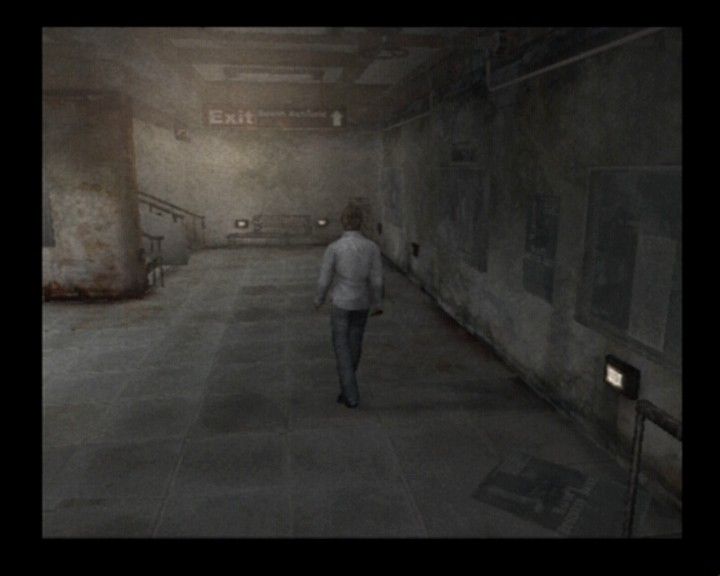
Players can now view their health during combat, and chargeable melee attacks add depth to fights. The game introduces generous invincibility frames, making combat more manageable. However, the limited inventory system, offering just ten slots, presents a mixed experience. While well-executed limited inventories enhance gameplay, Silent Hill 4’s attempt often leads to frustrations.
Also to note there are far less door jams than previous silent hill titles which is a nice change. But one of the game’s most disappointing removals is the lack of puzzles; there’s pretty much just one that requires some thought which is a real letdown.
While these alterations bring freshness to the series, the limited inventory and underwhelming puzzle elements may disappoint players accustomed to the more intricate and challenging gameplay of previous titles.
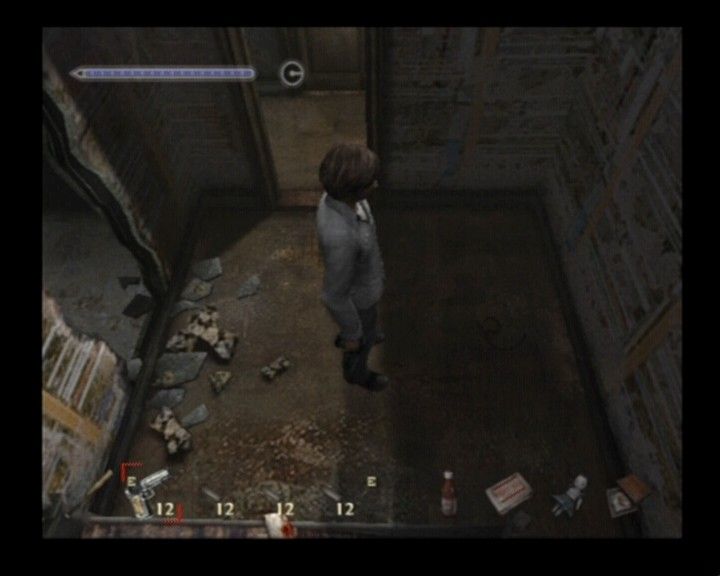
Graphics/Sounds
Silent Hill 4, released a year after Silent Hill 3, exhibits a mixed visual presentation. While it strikes a balance in the graphic, fidelity and art direction, there is an underlying issue with the lighting, resulting in a generally dull and gray appearance. Some of this somber tone is deliberate, especially within the game’s central room.
Character models maintain their high quality, but the music stands out as a notable highlight, particularly the title screen composition.
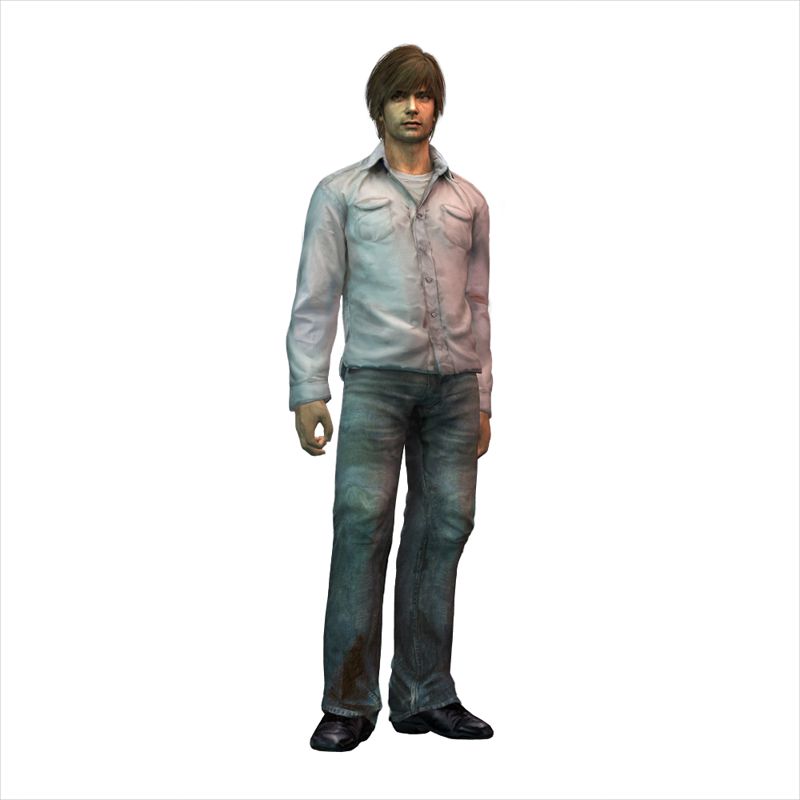
Replayability
Silent Hill 4’s replayability hinges on its multiple endings, encouraging players to explore different narrative paths. While the game offers intriguing story variations, limited gameplay innovations may deter extended playthroughs. Besides, it falls short of SH 3 and SH 2 in ascending terms of replay value. Nonetheless, completionists and fans of the Silent Hill universe may find value in uncovering the diverse conclusions.
Conclusion
Silent Hill 4: The Room presents a complex dilemma. While it retains classic series elements, they’ve become somewhat clichéd and less effective at inducing fear. The new first-person perspective in the room and item selection are interesting but not groundbreaking.
The game still has its merits, but the quality and quantity of boss fights and puzzles are disappointing. It might be suffering from overexposure, releasing yearly. It’s a decent survival horror experience, appealing to newcomers and diehard fans, but it may not entice those on the fence or seeking significant innovation. Console versions are recommended for superior visuals, controls, and audio synchronization.
Joys
- Amazing and intriguing plot
- Classic Atmospheric and eerie soundtrack
- Interesting first-person room perspective
Cons
- Clichéd and less scary
- Weaker Boss Fights and Puzzles
- Low replayability value as compared to previous versions of Silent Hill
